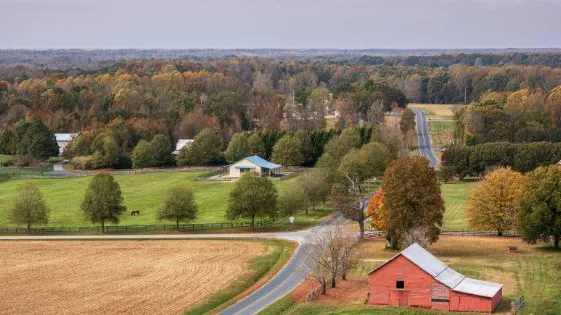When selecting a lot to build your home in North Carolina, there are several important factors to consider that can impact the feasibility, cost, and overall enjoyment of your home:
- Zoning and Land Use Regulations
Verify the lot's zoning designation with the local municipality or county. This will determine whether the land is suitable for residential use and if there are restrictions on the type, size, or style of the home you can build. - Soil and Land Condition
North Carolina has varied terrain, from sandy coastal areas to clay-heavy Piedmont soil and rocky mountain regions. A soil test is crucial to ensure the ground can support your home and to identify any need for soil preparation, grading, or a specific type of foundation. - Topography and Drainage
Assess the slope and elevation of the land. While a sloped lot can provide stunning views, it might require additional costs for excavation, retaining walls, or a walkout basement. Also, check for proper drainage to avoid water pooling, especially in areas prone to heavy rainfall. - Utilities and Access to Services
Determine if the lot has access to essential utilities such as water, sewer, electricity, and internet. In rural areas of NC, you may need a septic system and a private well, which should be evaluated by professionals before purchase. - Proximity to Flood Zones and Environmental Concerns
Check the FEMA flood maps to see if the lot is in a floodplain, particularly in low-lying coastal areas or near rivers. Building in flood-prone areas may require additional costs for flood-proofing and insurance. Be aware of environmental regulations if wetlands or protected areas are present on or near the property. - Road Access and Easements
Ensure the lot has legal access via a public road or a deeded easement. Also, consider the quality of the roads—gravel roads in rural areas might require maintenance, and steep mountain roads might pose challenges during construction. - Neighborhood and Surrounding Area
Evaluate the location’s proximity to amenities such as schools, healthcare, shopping, and major highways. In North Carolina, being close to vibrant cities like Raleigh, Charlotte, or Asheville might increase property value, while remote areas offer peace and lower land costs. - HOA or Covenant Restrictions
Many neighborhoods in North Carolina, especially in suburban and planned communities, have homeowner associations (HOAs) or covenants that dictate architectural styles, landscaping, and other design elements. Review these rules to ensure they align with your vision. - Natural Features and Views
North Carolina offers stunning natural beauty, from coastal views to mountain panoramas. Consider the lot’s orientation and natural surroundings to maximise views, sunlight, and privacy. - Construction Logistics
Consider the logistics of building on the lot. For example, mountain lots may require special equipment for construction, while coastal lots may need to meet hurricane-resistant building standards. - Budget and Additional Costs
Beyond the purchase price, consider costs for clearing trees, grading, utility installation, permits, and inspections. Lots in rural or rugged areas may require significant preparation before construction can begin.
Taking the time to evaluate these factors can help you select a lot that not only suits your dream home but also fits your budget and lifestyle. Consulting with an experienced builder, like Holloway Family Homes, can help you navigate these considerations and make an informed decision.



